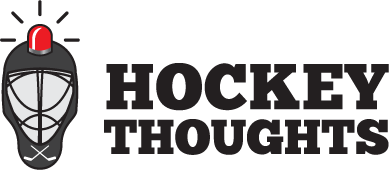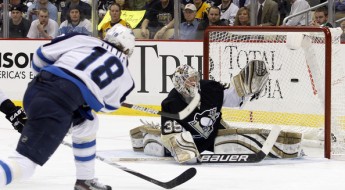How the Blackhawks won three Stanley Cups: Defense & Goaltending
“Defense wins championships.” Isn’t that the old saying?
Other than last year’s Stanley Cup winner (when Letang was injured), the previous 8 Cup winners have all had a franchise defenseman. Keith in Chicago three times, Letang in Pittsburgh twice, Doughty in L.A. twice, and Chara in Boston once.
They’ve also had at least an above average starting goaltender, ranging from the insanely hot in Tim Thomas, the acrobatics of Jonathan Quick, and the dependable play of Corey Crawford.
So if a franchise defender and top-10 goaltending is all you need, what’s the separation between teams that consistently push their way to the Conference Final and the team’s that don’t?
We’re going to make a formula that will highlight just that.
Will it be a perfect cookie cutter representation? No. But it will certainly allow us to set up a model that up-and-coming franchises can be compared to.
The Blueprint
To start digging into the back-end of the ‘Hawks blueprint, we’re going to look at their 3 Stanley Cup winning rosters.
We’re then going to assign a label to each player denoting their value for that particular year. Brent Seabrook, for example, will get an “F” for “franchise player”. Johnny Oduya would get a “2” for 2nd pairing defenceman.
Click here for a full explanation of the Rating System.
2010 Stanley Cup Roster
2013 Stanley Cup Roster
2015 Stanley Cup Roster
I’ve taken the most common trends throughout each roster, and mashed them into a one-size-fits-all formula that encapsulates the core of the Blackhawks succes. This should give us a pretty clear idea of what type of defensive talent is required to even consider a team capable of winning a Cup.
Interestingly, the ‘Hawks didn’t have 6 quality defencemen ever, but made up for it with an incredible top-4 composition. An offensive dynamo in Keith, a franchise two-way defender in Seabrook, and a fantastic shutdown defender in Hjalmarsson was all it took.
Coach Q would count on them to win 50 minutes of each game, and hope the bottom pair didn’t completely blow it for the remaining 10.
Check it:
The Formula
Now once again this formula is likely imperfect, and if you have adverse opinions, go start a blog about it. It’s kind of fun.
But a few key points can be taken:
- You need a franchise D. Only the 2006 Hurricanes (and the Pens last year) have won a Cup recently without a stalwart defenseman.
- The ‘Hawks were top heavy. They focused their off-season or deadline acquisitions on finding the fourth defenseman behind Keith, Seabrook, and Hjalmarsson. In the playoffs their bottom pairing would play less than 13 minutes as they leaned heavily on their top pairs.
- Lastly, the composition of their top 3 D is near perfect; Keith is the offensive machine, Seabrook is the two-way beast, and Hjalmarsson was their penalty killing shutdown dynamo. They have a top pairing version of all of the types of defensemen you can have, which makes shuffling the players around them quite simple.
The Blackhawks struck gold with both Seabrook and Keith in 2002/2003 to have them at around 23 years of age when Toews and Kane joined the roster, and were right in their prime at 27 years old when they won their first Cup in 2010. Talent matters most during a rebuild, but a very close second is timing. Not bad to have two stupendous defensemen ready to blossom right when you draft franchise offensive forwards.
The interesting thing about the ‘Hawks is just how top heavy their defense core has been. If you look at LA’s two Cup wins, they had Doughty and Willie Mitchell at the top, with Voynov and Martinez as cheap youngsters. Pittsburgh had Letang and Gonchar at the top with 4 solid options behind them. In the future as we dig into their rosters, it will be interesting to see just how stark a difference there has been. Chicago certainly has been unique in how top heavy its blueline composition has been.
To summarize, the Chicago defensive blueprint has a few key points:
- Three top defenseman to build around
- A capable 4th option
- An above average starting goaltender
Now comes the fun part:
What about other teams building exciting cores on the backend?
Philadelphia has Shane Gostisbehere, Ivan Provorov, Travis Sanheim, Samuel Morin, and Robert Hagg in the wings. Winnipeg has Jacob Trouba, Josh Morrissey, Dustin Byfuglien, and Tyler Myers locked up long-term. The Hurricanes have JustinFaulk, Jacob Slavin, Brett Pesce, Noah Hanifin, and Haydn Fleury. Will they be able to develop a strong enough core to compete with the best?
Or how about Columbus’ emergence in a franchise defender with Zach Werenksi? It’s no coincidence they jump to the top of the league with that addition. Combine Werenski with Seth Jones and Sergei Bobrovsky, and it’s looking pretty promising in Ohio.
We’re going to keep making comparisons, keep making projections, and keep the conversation stirred as to which teams are poised to make some serious impact. Are we going to be wrong? Sure, tons. But we’re going to make our best projections and attempt to have fun doing it.
In the coming month some things will happen:
- All 31 teams will get a Franchise Preview, and be given their own Current Formula.
- We will release a similar article for the Pittsburgh Penguins blueprint.
- We’ll check out the top players drafted since 2011 and rank them. (Yes, McDavid is at the top.)
If you’d like to get these articles directly to your inbox, you can sign up below. We spend zero spam ever, and every week we’ll send you a list of the articles we’ve published. We don’t write about current events very often, so they can be read days, weeks, or months after publication.



